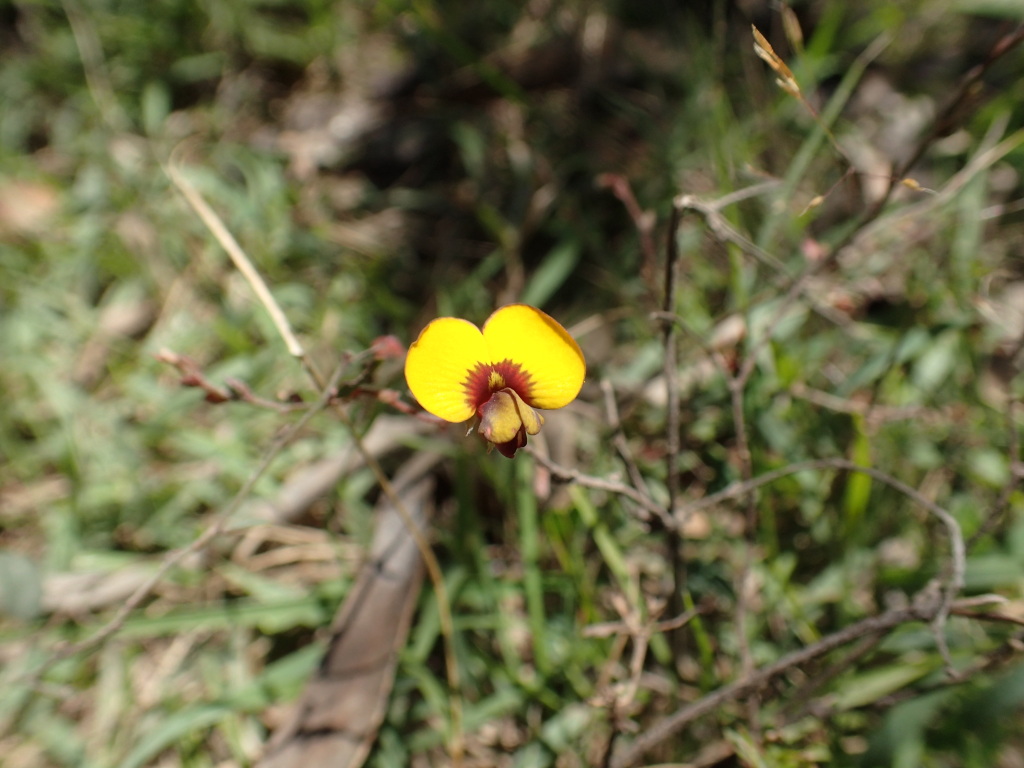Bossiaea prostrata
R.Br. Creeping BossiaeaProcumbent subshrub; stems somewhat flattened apically, glabrous or with short appressed or spreading hairs. Leaves alternate, unifoliolate, often rather distant, variable on a single plant, circular to narrow-ovate or oblong, 3–24 mm long, 2–10(–13) mm wide, glabrous or sparsely pubescent; petiole to 5 mm long; stipules narrow-ovate, 1–2 mm long, usually shorter than petiole. Flowers 1 or 2 together, 6–12 mm long; pedicels 1–2 cm long; bracts to 1.5 mm long; bracteoles usually inserted below middle of pedicel, 1–3 mm long, soon deciduous; calyx 3–5 mm long, sparingly pubescent, lobes acute; standard often longer than wings and keel, yellow externally, suffused red and brown, bright yellow internally; ovary ± sessile, c. 8-ovulate. Pods oblong, 1.5–3.2 cm long, glabrous apart from marginal cilia; stipe not exceeding calyx. Flowers Sep.–Nov.
LoM, Wim, GleP, Brid, VVP, VRiv, GipP, OtP, WaP, Gold, CVU, GGr, DunT, NIS, EGL, EGU, WPro, HSF, HNF, OtR, Strz, MonT, VAlp. Also SA, Qld, NSW, Tas. Common in southern, central and eastern Victoria, occurring in coastal heath and open-forest on a variety of soil types but favouring moister sites.
Ross, J.H. (1996). Bossiaea. In: Walsh, N.G.; Entwisle, T.J., Flora of Victoria Vol. 3, Dicotyledons Winteraceae to Myrtaceae, pp. 808–815. Inkata Press, Melbourne.
 Spinning
Spinning

